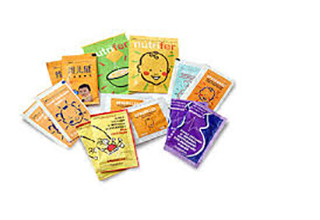Exploring Barriers to Uptake of Micronutrient Powders in Rural District, Zimbabwe: Findings from a Qualitative Study

Abstract:
Zimbabwe
is implementing a micronutrient powder program, which was designed to improve micronutrient
supplementation to children aged 6-23 months. One year after program inception,
there are indications that uptake of micronutrient powders is very low. Thus, the
study sought to identify barriers to uptake of micronutrient powders in Makoni rural
district. This was achieved through phenomenology philosophy and case study design.
Three villages from rural Makoni district, 11 focus groups and 20 in-depth interviews
were done. Key informants included caregivers, community leaders, community health
workers, health professionals and key stakeholders implementing the micronutrient
powder program. Interviews were digitally recorded, transcribed and thematically
analysed using Coding Analysis Toolkit. Findings from the study show that barriers
to uptake of micronutrient powders are poor accessibility; lack of adequate information
on potential micronutrient powder side effects and poor post distribution monitoring;
poor social mobilization and food unavailability. The study recommends that nutrition
related programs in Zimbabwe should consider improving accessibility of micronutrient
powders by considering community distribution points for micronutrient powders.
In addition, nutrition related programs should consider providing adequate information
on potential side effects of micronutrient powders and provide micronutrient powders
as ready to eat supplements to bridge food unavailability gap.
Keywords:
Barrier, micronutrient powders, infant and young child feeding, social and behaviour
change communication, Zimbabwe.
References:
[1].
Akoto Osei, A.
S. (2014). Using Formative Research to Inform the Design of a Home
Fortification with Micronutrient Powders (MNP) Program in Aileu District,
Timor-Leste. Food and Nutrition Bulletin, 68-82.
[2].
Best C, N. N.
(2011,). Can multi micronutrient food fortification improve the micronutrient
status, growth, health, and cognition of schoolchildren? A systematic review.
Nutrition Reviews. International Life Sciences Institute, 69 (4): 186-204.
[3].
Clements, R. J.
(2011). Spatial heterogeneity of haemoglobin concentration in preschool-age
children in sub-Saharan Africa. Bulletin of the World Health Organization,
2011;89:459-468.
[4].
Halati S, V. H.
(2013). Home fortification in refugee camps: micronutrient powder
supplementation program for Bhutanese refugee children in Jhapa and Morang
districts, Nepal. Geneva: The HF-TAG website (http://hftag.gainhealth.org/).
[5].
Hilary
Creed-Kanashiro, R. B. (2015). Promoting multi‐micronutrient powders (MNP) in
Peru: acceptance by caregivers and role of health personnel. Maternal and Child
Nutrition, 152-163.
[6].
Hyder SMZ, H. F.
(2007). Effect of daily versus once-weekly home fortification with
micronutrient Sprinkles on hemoglobin and iron status among young children in
rural Bangladesh. Food Nutrition Bulletin, 156–164.
[7].
Jefferds ME, M.
K. (2015). of micronutrient powder sachet coverage in Nepal. Maternal Child
Nutrition, 11:77-89.
[8].
Jefferds ME, O.
L. (2010). Formative research exploring acceptability, utilization, and
promotion in order to develop a micronutrient powder (Sprinkles) intervention
among Luo families in western Kenya. . Food Nutrition Bulletin, S179-85.
[9].
Karim F, C. N.
(2015). Adherence to multiple micronutrient powder among young children in
rural Bangladesh: a cross-sectional study. Bangladesh: BRAC.
[10].
Kodish S, R. J.
(2011). Understanding low usage of micronutrient powder in the Kakuma Refugee
Camp, Kenya: findings from a qualitative study. Food Nutrition Bulletin, 32:
292-303.
[11].
Kristina
Michaux, A. A. (2014). Home Fortification with Micronutrient Powders: Lessons
learned from formative research across six countries. Sight and Life, 25-35.
[12].
Mahama Saaka, P.
A.-l. (2017). The effect of social behavior change communication package on
maternal knowledge in obstetric danger signs among mothers in East Mamprusi
District of Ghana. Bio-Med Central, 13-19.
[13].
Mirak Raj
Angdembe, N. C. (2015). Adherence to multiple micronutrient powder among young
children in rural Bangladesh: a cross-sectional study. BMC Public Health,
15:440.
[14].
Mirkovic KR, P.
C. (2016). Predictors of micronutrient powder intake adherence in a pilot
programme in Nepal. Public Health Nutrition, 19:1768–76.
[15].
Munyoro, G.
(2014). An Evaluation of the Effectiveness of Handouts in Enhancing Teaching
and Learning in Higher Education. AFRICA DEVELOPMENT AND RESOURCES RESEARCH
INSTITUTE (ADRRI) JOURNAL, 95-107.
[16].
Organization, W.
H. (2016). Use of multiple micronutrient powdersfor point-of-use fortification
of foods consumed by infants and young children aged 6-23 months and children
aged aged 2-12 years. World Health Organization.
[17].
Organization, W.
H. (2017). Multiple micronutrient powders for point-of-use fortification of
foods consumed by children 6–23 months of age. Geneva: e-Library of Evidence
for Nutrition Actions (eLENA).
[18].
Osei A, S. A.
(2014). Using formative research to inform the design of a home fortification
with micronutrient powders (MNP) program in Aileu District, Timor-Leste. Food
Nutrition Bulletin, 35:68–82.
[19].
Parminder S
Suchdev, O. Y.-A. (2016). Effects of community-based sales of micronutrient
powders on morbidity episodes in preschool children in Western Kenya. American
Journal Clinical Nutrition, 1-16.
[20].
Rehana A Salam,
C. M. (2013). Effectiveness of Micronutrient Powders (MNP) in women and
children. BioMed Central Public Health, S22.
[21].
Seidel, J. V.
(1998). Qualitative Data Analysis. Qualis Research.
[22].
Soofi S, C. S.
(2013). Effect of provision of daily zinc and iron with several micronutrients
on growth and morbidity among young children in Pakistan: a cluster-randomised
trial. Lancet, 382(9886):29–40.
[23].
Stephen Kodish,
J. H. (2011). Understanding low usage of micronutrient powder in the Kakuma
Refugee Camp, Kenya: Findings from a qualitative study. Food and Nutrition
Bulletin, 292-303.
[24].
Survey, Z. N.
(2018). Food and NUtrition Council of Zimbabwe.
[25].
Yount, R. (2006,
4th Edition). Population and sampling.

